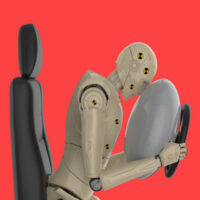How Airbags Reduce Injury Risks

Airbags can be found in all modern vehicles. While this equipment is supposed to protect you in an accident, how exactly do they work?
Airbags are inflatable cushions built into a vehicle. They inflate instantly when a crash occurs to provide crucial cushioning. They protect occupants from hitting the vehicle interior or objects outside the vehicle.
Airbags are hidden throughout the vehicle — typically in the steering wheel, glove box, and sides of the vehicle. While front airbags have been required in all passenger vehicles since 1999, side airbags are not mandatory.
Airbags do not deploy in every car accident. It depends on the severity. If the crash is severe enough, the sensors signal inflators to fill the bags with gas in a fraction of a second. Once an airbag is deployed, it must be replaced at a repair shop that uses original equipment manufacturer (OEM) replacement parts. That’s because some places use counterfeit airbags, which are unsafe. They may release metal shrapnel during deployment or fail to deploy altogether.
How They Work to Minimize Injuries
Airbags provide a cushion to help reduce the impact to vehicle occupants, but here’s a breakdown of how exactly they work help minimize injuries:
- Absorb impact forces. Airbags distribute the force of a crash over a larger area of the body, reducing localized pressure that could cause severe injuries. Without airbags, the force would be concentrated on a smaller area, such as the head or chest striking the dashboard.
- Prevent head and chest trauma. In frontal collisions, airbags prevent the driver and passengers from slamming into the steering wheel, dashboard, or windshield. Side airbags help reduce injuries from impacts against the door or objects outside the vehicle.
- Reduce whiplash and spinal injuries. While primarily designed to protect the head and chest, airbags also help reduce excessive neck movement, lowering the risk of whiplash or spinal injuries in severe crashes.
- Enhance seat belt effectiveness. Airbags work together with seat belts to provide maximum protection. Seat belts restrain the body and keep occupants positioned correctly, allowing airbags to cushion the impact more effectively.
- Minimize broken bones and lacerations. Airbags prevent direct contact with hard or sharp surfaces. This helps reduce fractures and deep cuts that could result from broken glass or metal components in a crash.
- Advanced protection for different collisions. Modern vehicles include front, side, curtain, and knee airbags, each designed to address specific injury risks in various types of crashes. Side curtain airbags, for example, protect against head injuries in rollover crashes by covering the windows.
Contact Us Today
Airbags are an innovative technology that have saved countless lives since their inception. Still, a major accident can cause lifelong injuries and even death.
If you have been injured in a crash, get the right legal help from the Kissimmee auto accident lawyers at Draper Law Office. We can assist you with getting the physical and financial recovery you need to move forward. Schedule a consultation today by filling out the online form or calling (407) 743-6628.
Source:
iihs.org/topics/airbags#:~:text=Side%20airbags%20cushion%20and%20spread,head%20and%20the%20striking%20vehicle.






